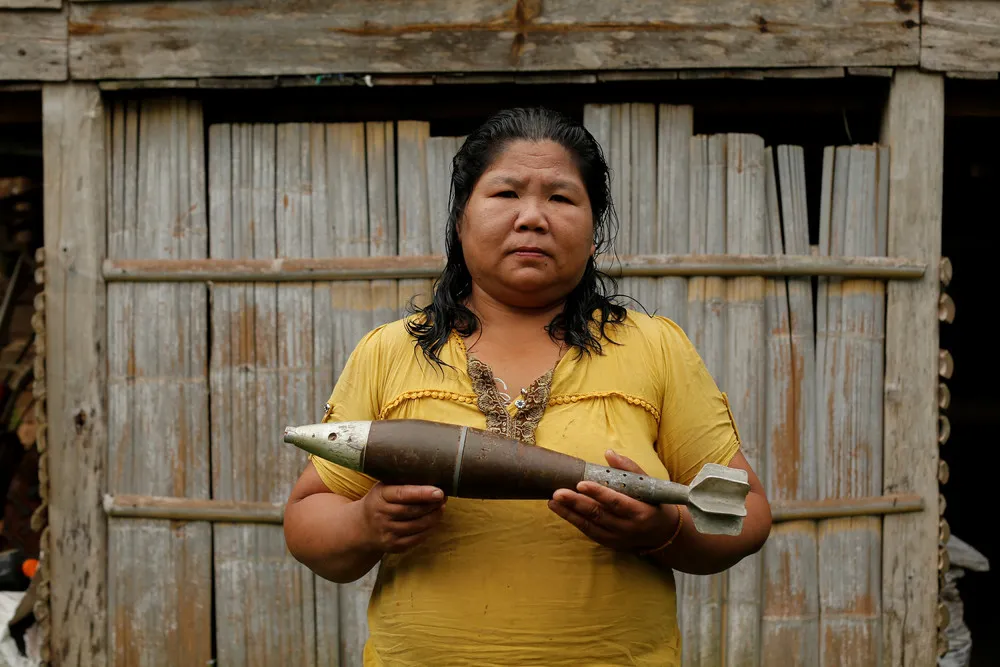|
Toui Bounmy Sidavong, 43, holds a bomb dropped by the U.S. Air Force planes during the Vietnam War, in the village of Ban Napia in Xieng Khouang province, Laos September 3, 2016. Addressing the legacy of war in Laos will be a focus of U.S. President Barack Obama's trip this week to the country's capital, Vientiane, for a meeting with Association of Southeast Asian Nations (ASEAN) leaders and an East Asia Summit. Obama, who will become the first sitting president of the United States to visit Laos, is expected to announce more funding to help clear leftover bombs and conduct Laos' first national survey on unexploded ordnance. From 1964 to 1973, U.S. warplanes dropped more than 270 million cluster munitions on Laos, one-third of which did not explode, according to the Lao National Regulatory Authority for UXO (NRA). The bombings were part of a CIA-run, secret operation aimed at destroying the North Vietnamese supply routes along the Ho Chi Minh trail and wiping out its communist allies. They also left a trail of devastation in Laos, which U.S. planes used as a dumping ground for bombs when their original target was unavailable and planes couldn't land with explosives. Across the country, over 20,000 people have been killed or injured by bombs since the war, many of them children. According to Legacies of War, an organization focused on addressing the impact of bombs dropped on Laos, $25 million a year will need to be spent over the next decade to prevent further casualties. (Photo by Jorge Silva/Reuters)
|

